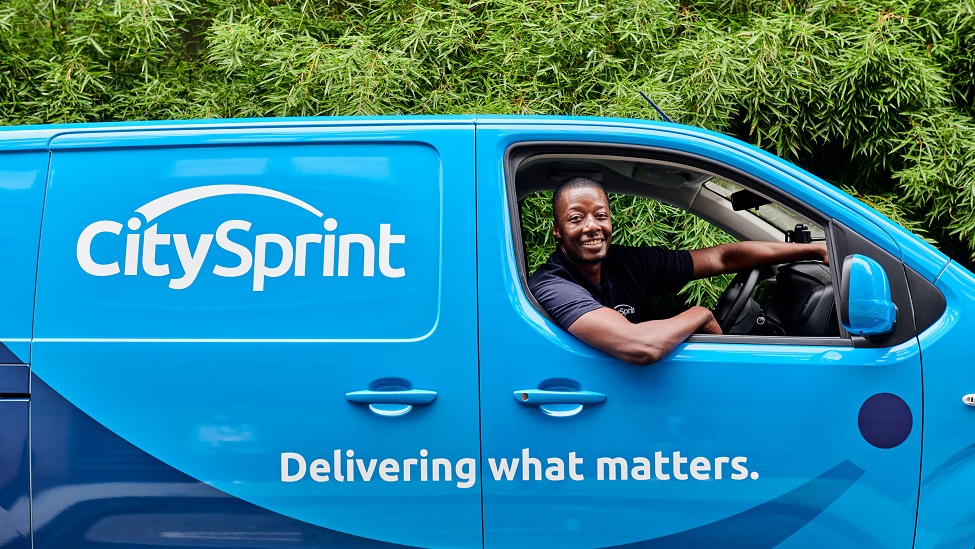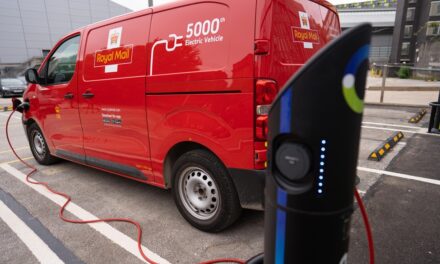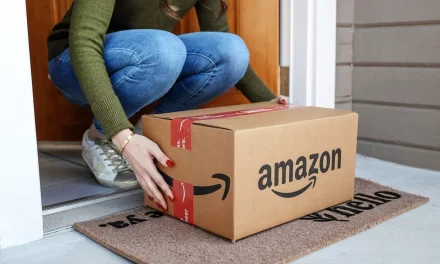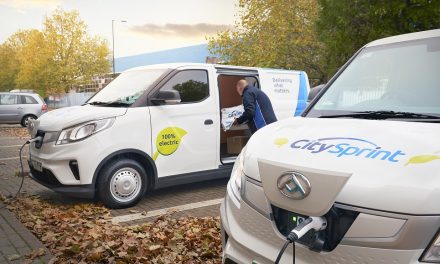
Delivering to the capital

Post & Parcel speaks to Mark Bridges, London Regional Manager at CitySprint. Mark discusses the challenges of forecasting demand during the pandemic, shifting to a more digital model and focusing sustainably on further growth.
You have been in the industry since 1993 – what has kept you in the sector?
I find the logistics industry extremely exciting to work in . In the same day business in particular, you can never truly predict what the demand will be on any given day, as most work in London is on an ad-hoc basis.
The industry is also constantly evolving and innovating and has been since I joined it in 199.3 — Embracing technology, for example, has helped make operations more efficient and enables us to identify solutions for complex logistics problems as demand increases.
How has the demand for same day delivery changed during the pandemic?
 The pandemic made it extremely challenging to forecast demand and therefore ensure that sufficient resource was in place as and when it was required. We experienced massive peaks and troughs in volume as we maneuvered in and out of lockdowns and the number of people applying to be self-employed couriers to tender their services to us went through the roof.
The pandemic made it extremely challenging to forecast demand and therefore ensure that sufficient resource was in place as and when it was required. We experienced massive peaks and troughs in volume as we maneuvered in and out of lockdowns and the number of people applying to be self-employed couriers to tender their services to us went through the roof.
In London in particular, we saw a major swing in the demographic of our delivery profile when the city first went into full lockdown in March 2020. Our push bike and cargo bike circuits were the most impacted and the demand for short-distance and urgent work between businesses in the square mile evaporated almost overnight. Meanwhile, we witnessed a spike in demand for van couriers to assist with the same day transportation of IT and office equipment from the city into the greater London area and home counties. This trend for longer-distance, same day deliveries has been maintained throughout the pandemic and is still ongoing, while cargo and push bike work is starting to return.
Overall, however, 2021 was a much more stable year for us — with volumes reaching levels similar to our usual seasonal peaks and troughs. And with the growing demand for same day van deliveries, we are actively looking to bolster our van fleet courier numbers — both to allow us to continue to deliver a first-class service to our customers across industry sectors and help us to stay ahead of our competitors.
How has the business had to change?
We have become a lot more agile as a business. In London, we were able to relocate our entire operation to a home-working model within 48 hours for the initial lockdown and now maintain this ability as a failsafe.
We appreciate the value of teamwork more than ever and have streamlined our operations and processes and reinforced our management and support structures. Our colleagues work a lot more closely and efficiently across all departments, which has positively impacted the service that we deliver in London.
We have moved all of our courier recruitment, training and onboarding online, empowering us to react faster to demand, and we developed our courier app to enable “leave safe”, contact-free and device-free delivery.
The shift to a more digital model also means we are now able to set up new operations, reallocate resources and implement change more efficiently. This allowed us to take advantage of the increase in volumes on our healthcare and DIY home delivery services. We continue to win new healthcare accounts and adapt our health operations in line with the twists and turns of the pandemic and are delivering record volumes and service levels through our DIY home delivery operation.
In London specifically, we monitor volumes, delivery profiles, demographics and fleet levels more closely than ever. We are more efficient, deliver higher service levels and are able to react to the constantly changing delivery challenges of our capital city more effectively and faster — much of this is due to the lessons learned navigating the pandemic.
How has the company diversified?
The demand for our healthcare logistics services soared as a result of the pandemic. In the last six months alone, we have successfully delivered over 88 million lateral flow tests across the country, as we continue to support the government in the fight against Covid. In response to this, around 70% of our London courier fleet are now trained and accredited to carry out sample, pathology and medication deliveries, which allows us to nimbly react to spikes in Covid cases and best support the NHS with their logistics.
Is it sustainable for the sector to keep up with the speed customers require goods to be delivered?
CitySprint is primarily a same day courier company. We strive to offer our customers the fastest and most reliable courier service in the UK and our national footprint drives our competitive advantage. We believe in charging the “right price for the job”. This philosophy ensures that our service levels and our business model are sustainable for our clients, colleagues, and couriers.
We do, however, need to think more carefully about the degree of immediacy required. For example, the need for a collection and delivery within 60 minutes when a two-to-three-hour timeframe may also work. From an environmental sustainability perspective, the greater the delivery window, the more deliveries we can consolidate into a single vehicle — reducing the carbon footprint per delivery. With CSR and the environment so high on our agendas, it must surely be worth posing these questions?
What are the challenges of operating in a city like London?
 A city, particularly London, is abundant with challenges when it comes to same day delivery operations. For example, there are the added operating costs of the congestion charge and the clean air zones, which have recently been extended. There are also regular events across the city which cause gridlock on the roads and impact deliveries (e.g., sporting events, protests etc.).
A city, particularly London, is abundant with challenges when it comes to same day delivery operations. For example, there are the added operating costs of the congestion charge and the clean air zones, which have recently been extended. There are also regular events across the city which cause gridlock on the roads and impact deliveries (e.g., sporting events, protests etc.).
The key to managing these is communication. We have an effective service alert process that allows us to keep our clients updated on anything which might affect them. We are also able to measure the impact of any such incidents and factor these into collection and delivery times.
Changes to road layouts, one-way systems and pedestrianised zones are other things that can cause challenges. Communication from our couriers back to our operations team is paramount in mitigating these and, again, they are fed back into the system enabling us to set client expectations accurately at the time of booking.
There are, of course, some incidents that may occur post-booking or collection and catch you off guard, but our operations team keeps our clients updated in real-time when this is the case. Setting accurate expectations is key to success and can only be achieved through clear and concise communication.
We have a number of service centres on the periphery of the city and in the event of a major incident are able to redirect, cross-dock or hold deliveries at these locations until the incident is cleared.
How have customers’ preferences changed since the pandemic?
Apart from the change in delivery profile, the second greatest change that we are increasingly noticing, is that CSR and the environment are higher than ever on everyone’s agenda. It’s evident in the larger tenders that we are completing that the weighting for sustainability is increasing and at CitySprint we are committed to make a difference by delivering our CSR objectives.
What does 2022 hold for CitySprint?
2021 was a year of change and significant growth. We want more of the same in 2022, focusing sustainably on further growth opportunities by building on the foundations and learning from the last two years.
About Mark Bridges
 Mark joined CitySprint in 2011 and became Regional Manager for the business’ London service centre in January 2021. He is responsible for the strategic direction, growth, and performance in London, with a focus on maintaining and improving CitySprint’s collection/ delivery and financial performance to drive best in class service in the region. On a day-to-day basis, Mark oversees a fleet of just over 500 vehicles, 38 office staff and managing approximately 2,000 same day deliveries per day.
Mark joined CitySprint in 2011 and became Regional Manager for the business’ London service centre in January 2021. He is responsible for the strategic direction, growth, and performance in London, with a focus on maintaining and improving CitySprint’s collection/ delivery and financial performance to drive best in class service in the region. On a day-to-day basis, Mark oversees a fleet of just over 500 vehicles, 38 office staff and managing approximately 2,000 same day deliveries per day.
A seasoned professional, he has worked across several roles in the logistics industry since he entered it in 1993, including General Manager, Head of Operational Projects and Head of Courier.













